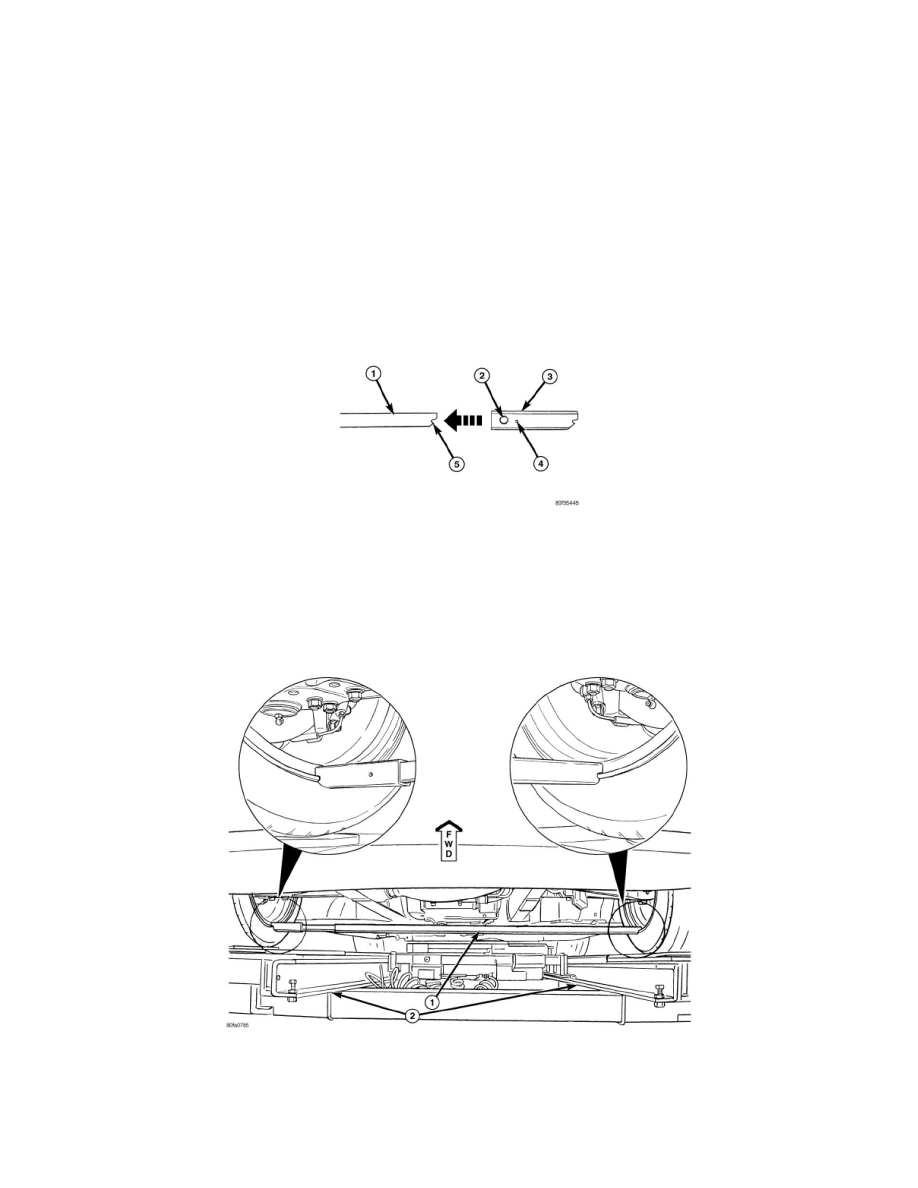Viper SRT-10 V10-8.4L (2008)

Alignment: Service and Repair
Design Height Measurement
DESIGN HEIGHT MEASUREMENT
NOTE: This procedure is designed to be performed with original factory wheels installed. Non-OEM wheels may cause inaccurate
measurement.
1. Verify vehicle fuel tank is full of fuel. If tank is not full of fuel, reduction in weight will affect height of vehicle and design height measurement.
2. Remove any load within passenger and luggage compartments that is not factory equipment.
3. Place vehicle on wheel alignment rack or drive-on lift per equipment manufacturer's recommendations.
4. Check all tires for proper inflation pressure and adjust as necessary.
NOTE: In order to get an accurate rear height measurement it is necessary to remove the belly pan.
5. Remove belly pan from frame. See: Body and Frame/Exterior Moulding / Trim/Underbody Cover/Service and Repair/Belly Pan - Removal
6. Place Height Gage Extension (3), Special Tool 8997, over smaller end of one of two Suspension Height Gages (1), Special Tool 6914, aligning
adapter locating pin with notch in gage end.
7. Tighten adapter thumb screw (2).
NOTE: The height gage with the adapter attached to it is now the height gage to be used on the front suspension.
NOTE: In order to achieve an accurate vehicle height measurement, it is absolutely necessary to position the height gages on the inner rim
flange at the very bottom of the wheel. That way the top surface of each gage is parallel front-to-rear with bottom surface of the frame rails.
8. Install front Suspension Height Gage (1) with Extension on vehicle. Ensure that gage is correctly attached to inner rim flange at very base of each
wheel.
